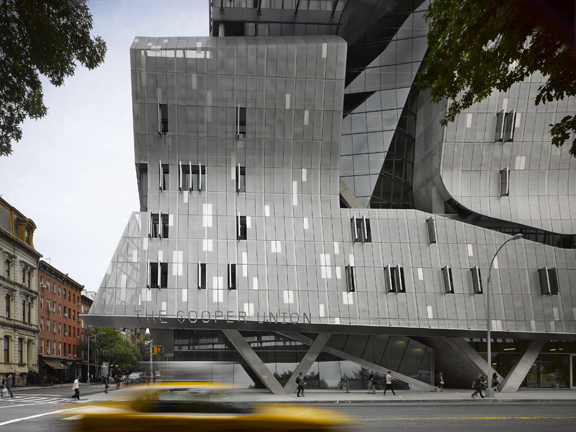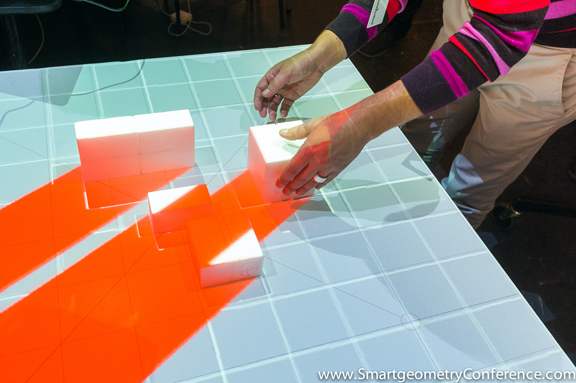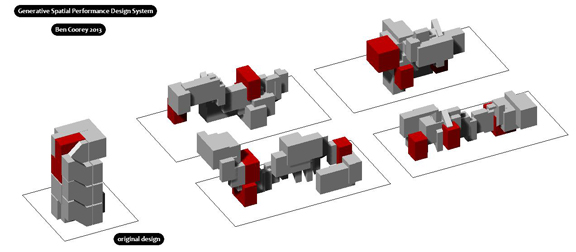Latest News
April 22, 2013
SmartGeometry Conference (SG), the annual gathering organized by SmartGeometry Group, is now in its 12th year, with a solid history to prove its international appeal. But even long-time SG alumni are often at a loss for words when pressed to describe the event.
“What is SmartGeometry? I don’t actually have a straight answer to that. It’s a question that we ask ourselves many times,” said Xavier de Kestelier, one of the SG directors, during his opening speech this year (SG2013, The Bartlett: UCL, London, April 15-20). It’s not a scholarly event where professors get up and read papers, hiding behind tall lecterns and impenetrable academic terms. It’s not an industry event where people trade war stories and network over free-flowing wine and beer. “SG is one of the events where we get practice and academia to come to the same event and interact,” said Kestelier. “I never talk about SG conference; I always talk about SG workshop/conference, because that workshop is very important, probably the most important thing.”
SG participants are a blend of academics and top talents from design and architecture firms. The brain power and industry muscle embodied by the event are evident in the attendees’ roll call, punctuated with the likes of Universidad Politécnica de Madrid; Warsaw University of Technology; Future Cities Laboratory, Singapore; Office for Metropolitan Architecture, Rotterdam/London.
Every year, they flew in from around the world to the designated host city: Barcelona in 2010; Copenhagen in 2011; Troy, New York, in 2012. They sign up to be in SG workshops, or Clusters. Here, racing against time (and temporarily setting aside sleep), they put certain principles to test in a mix of scale models, software programming, and electromechanical experiments. The collaborative projects culminate in a series of presentations, delivered live at a symposium on the final day of the event.
SG workshops are usually guided by a theme. In 2010, it was exploring functional prototypes. In 2011, it was wrestling with invisible data streams (sensor data, energy calculation, etc.). In 2012, it was studying material behaviors. This year, it was constructing for uncertainty. “Design and construction, increasingly more information-centric, simultaneously has to deal with issues of computational ambiguity. As designers, we must deal with the realities of our context, both material and immaterial, and how it manifests from the micro to macro scale in spaces, buildings and cities,” explained SG’s home page.
During the opening day, Shane Burger, director of design technology at Woods Bagot, outlined some of the nagging questions the SG clusters planned to address: “There are lots of discussions about big data and the use of data in design. The issue with that is, there’s only a subset of data that you can actually model in a traditional CAD package. The landscape of the world—culturally, economically, environmentally—is becoming much more dynamic. They’re constantly changing. How do you deal with this? How do we explore topics like optimization when we have to move beyond things that are easily quantifiable, and you’re not quite sure about the quality of the data coming in? What is the role of efficiency in a dynamic environment? When the program or the environment changes 20 years from now, what is efficiency? What does that mean? And the uncertain future of occupant behavior?”
One cluster, dubbed Digital Intuition and Prediction, said, “Uncertainty springs from our inability to foresee the implication of early design actions across stretches of time and scales of space. Our approach is centered about augmenting intuition by enabling prediction via computation. We offer systems design methods to improve conventional architectural and engineering workflows such as parametrics, building information modeling and computational form-finding techniques.”
Another cluster confronted the uncertainties with Adaptive Structural Skins (also the name of the cluster). “We are interested in harnessing the engrained geometric or structural physical properties of materials to simultaneously generate movement and stability. We refer to these structure s as Structural Skins, because they often consist of a single continuous material (as in organic tissue) like sheet metal, timber or plastic, where properties are differentiated through ribbing density, folding and other geometric patterning or scoring,” explained the cluster participants in a presentation document.
SG also serves as a gathering place for practitioners of generative design, a design-automation method driven by algorithms. Bentley’s Generative Components (GC) software is widely used by those who share this vision. According to Bentley, “Empowered by computational methods, designers can direct their creativity to deliver inspired sustainable buildings that are freer in form and use innovative materials and assemblies. GenerativeComponents facilitates this by allowing the quick exploration of a broad range of ‘what-if’ alternatives for even the most complex buildings.” GC is widely used in architecture and construction, but its promise and potentials may also benefit other engineering disciplines.
Some of the questions raised by the constructing-for-uncertainty theme is not confined to architecture industry itself. Though they are designing products with shorter lifespans than typical buildings, automotive, aerospace, and consumer good designers must still wrestle with unpredictable usage models and changing regulatory environments.
Perhaps SG defies categorization as an event because it refuses to be pigeonholed. Bridging theory-driven academia and practice-driven builders, the event forces participants to challenge accepted conventions and wrestle with paradoxes: How do you design something that lasts 20-50 years when digital prediction methods currently available don’t allow you to see that far into the future? How do you design permanent structures that house populations with impermanent behaviors? These questions continue to plague—and inspire—talented designers.
Subscribe to our FREE magazine, FREE email newsletters or both!
Latest News
About the Author
Kenneth Wong is Digital Engineering’s resident blogger and senior editor. Email him at [email protected] or share your thoughts on this article at digitaleng.news/facebook.
Follow DE








